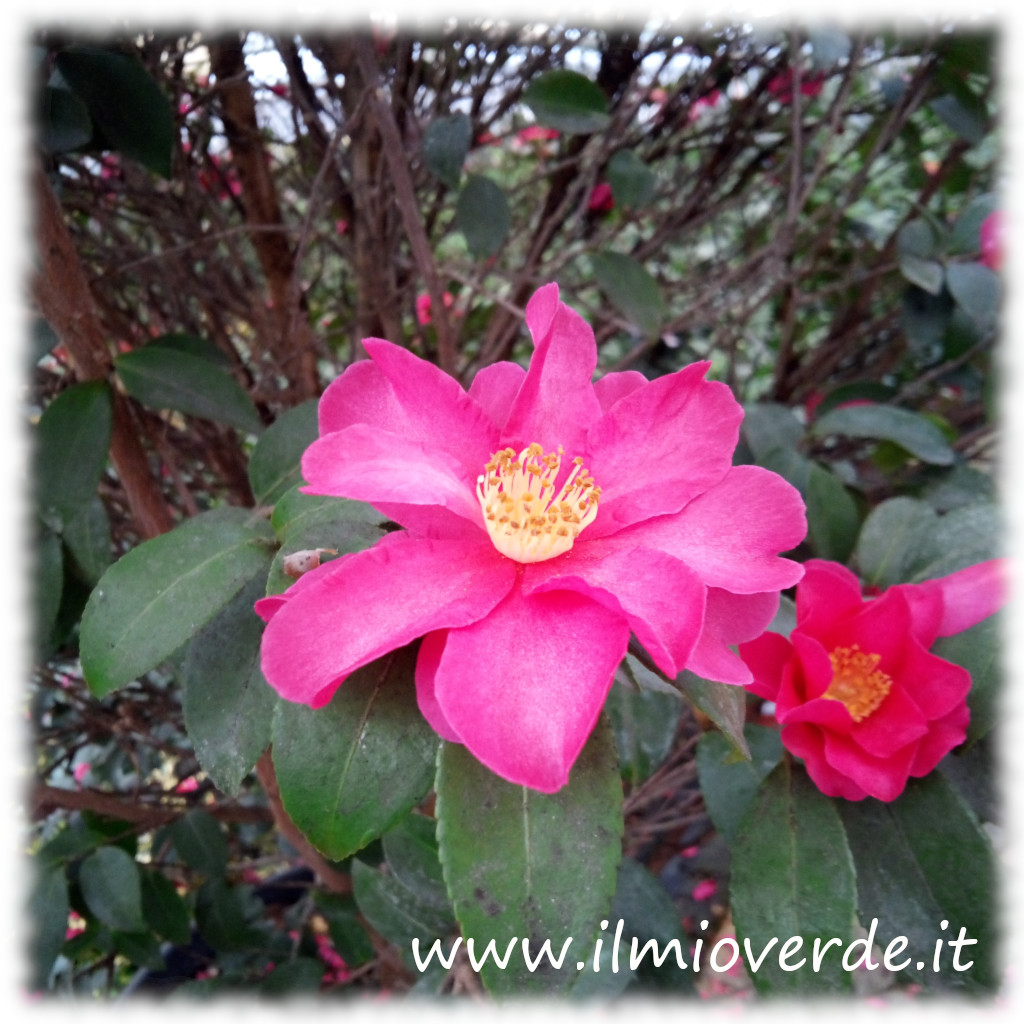Camellia sasanqua
Scientific Classification
Kingdom: Plantae
Family: Theaceae
Genus: Camellia
Species: Camellia sasanqua
History and Origin
The Camellia sasanqua is native to Japan and China, where it has been cultivated for centuries for the beauty of its flowers and its hardiness. The name “sasanqua” comes from the Japanese word “sazanka” (サザンカ), meaning “mountain tea flower,” as its leaves can be used to produce tea similar to Camellia sinensis.
Description
It is an evergreen shrub that can reach a height of 3-5 meters, with small, oval, glossy dark green leaves. The flowers, depending on the variety, can be single, semi-double, or double, with delicate petals that range from white to pink to red. Their fragrance is light and pleasant.
Flowering
One of the unique features of Camellia sasanqua is its autumn and winter flowering, occurring between October and January. This makes it particularly appreciated in gardens as it adds color during the colder months.
Climate and Exposure
It prefers a mild climate and adapts well to both full sun and partial shade. It is more tolerant of drought and direct sunlight compared to Camellia japonica, but it suffers from strong winds and prolonged frosts.
Soil
Like all camellias, it prefers acidic, well-drained soil rich in organic matter. Calcareous soils can cause chlorosis problems, leading to yellowing of the leaves.
Watering and Fertilization
It requires regular watering during the hotter periods, avoiding water stagnation that could damage the root system. In winter, watering should be reduced. It is recommended to fertilize Camellia sasanqua in spring and late summer with a specific fertilizer for acid-loving plants, rich in nitrogen, phosphorus, and potassium.
Propagation
Propagation is mainly by semi-woody cuttings taken in summer and placed in a light, well-drained substrate. Growth is slow, but with proper care, robust, flowering plants can be obtained.
Care and Tips
Mulch the base of the plant with pine bark or needles to maintain soil acidity.
Prune after flowering to maintain a compact, tidy shape.
Protect young plants from intense frost.
Diseases and Pests
Camellia sasanqua is generally resistant but can be attacked by scale insects, aphids, and red spider mites. To prevent this, it is helpful to check the plant regularly and treat with natural products or horticultural oils.
Garden Use
Thanks to its autumn flowering and hardiness, it is perfect for hedges, borders, or as a specimen plant. It also adapts well to container cultivation and is often used in Japanese-style gardens.
Camellia sasanqua is an excellent choice for those who want an elegant, low-maintenance plant capable of brightening up the garden with its flowers during a time when many other plants are dormant.
Events Dedicated to Camellia sasanqua
Currently, one of the Italian events celebrating Camellia sasanqua is “Le Giornate delle Camelie” at Villa Della Porta Bozzolo, held in autumn in Casalzuigno (VA). During the event, visitors can admire various camellia varieties, attend themed meetings, and purchase exhibited specimens. For updated information on dates and the programme, it is recommended to visit the official event website: fondoambiente.it
Immagine di Davide Giuseppe Zannini
